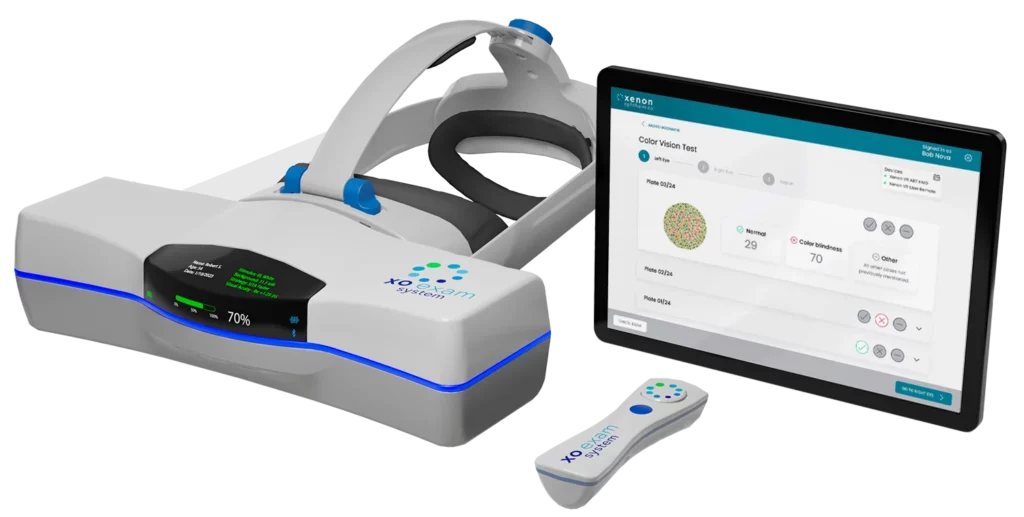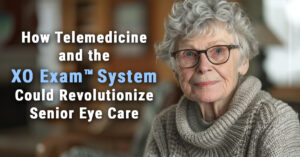The Stark Reality: A Deficiency in Eye Care Professionals
In many developing parts of the world, access to quality vision care remains a luxury, not a given.The World Health Organization (WHO) has previously highlighted that globally, “at least 2.2 billion people have vision impairment or blindness, of whom at least 1 billion have a vision impairment that could have been prevented or has yet to be addressed.”
These numbers are alarming and emphasize the glaring shortage of eye care professionals and facilities, especially in low and middle-income countries.
The Surge in Screen Time: A Myopic Generation
While bringing about many conveniences, the digital age has had its downside. Increased screen time, especially among the younger population, is leading to a rise in myopia (short-sightedness).
Studies have shown a strong correlation between device use and myopia, especially in children who spend considerable time on screens without adequate breaks.
The progression is rapid in many cases, with countries in East Asia documenting an 80-90% incidence of myopia among school leavers. If left unchecked, this can lead to more severe eye conditions in the future.
Health Conditions Impacting Vision
The interplay between systemic health and eye health is profound. With the global rise in lifestyle diseases, we’re witnessing a spike in vision-related complications. For instance:
Diabetic Retinopathy
As the prevalence of diabetes rises globally, diabetic retinopathy, a complication affecting the eyes, follows suit. It’s estimated that one-third of people with diabetes have signs of diabetic retinopathy.
Hypertensive Retinopathy
Similarly, with the global increase in hypertension (high blood pressure), hypertensive retinopathy, where the retina’s blood vessels get damaged due to prolonged high blood pressure, is also on the rise.
The Aging Factor
As the global population ages, age-related eye conditions are becoming more prevalent. Cataracts remain the leading cause of blindness worldwide. Diseases like glaucoma and macular degeneration are also increasingly becoming public health challenges. The WHO has even predicted that by 2050, 50% of the world’s population will be myopic, with 10% at a high risk of severe vision impairment due to high myopia.
The Way Forward
Given the dire need for vision care, what can be done?
1Scaling up training
Governments and international health bodies must prioritize and invest in training more ophthalmologists and optometrists, especially in areas with severe shortages.
2Innovative Solutions
Tele-optometry, where eye examinations and consultations are conducted remotely using technology, can be a game-changer for remote areas with limited access to eye care facilities.Beyond a solution in underserved populations, medical-grade ophthalmic diagnostic devices such as Xenon Ophthalmics™ XO Exam™ System can also help solve the critical need for eye exams in the developed world.
3Public Awareness
An informed public can be the first line of defense against vision impairment. Regular eye check-ups, awareness of the risks of excessive screen time, and understanding the eye-related complications of systemic diseases can lead to early detection and prevention.
4Integrating Eye Care into Primary Health Care
The pressing need for vision care on a global scale is palpable. As we forge into a digital age marked by technological advancements and health challenges, we must prioritize our “windows to the world.” Only through a concerted effort can we bridge the gap and ensure that vision care is accessible and available to all.
Paving the Path to Greater Access to Eye Care
The XO Exam™ System plays a pivotal role in broadening the reach of eye care, emphasizing inclusivity. The World Health Organization has noted that over a billion people worldwide require eyeglasses but don’t have the access to eye care needed to obtain them. By enhancing accessibility, the XO Exam™ System works to bridge this gap, reaching out to those who might have otherwise been left behind.
A New Era in Eye Care: Key Takeaways for Professionals
The XO Exam™ System by Xenon Ophthalmics exemplifies the transformative impact of innovation on the eye care horizon. It not only enhances patient comfort but also amplifies accessibility, boosts operational efficiency, and offers a financially viable choice for Eye Care Professionals.
By adopting technologies like the XO Exam™ System, we are navigating towards an eye care future that is streamlined, more accessible, and universally inclusive. Such advancements propel us closer to achieving an all-encompassing vision of eye care for everyone.
A Comprehensive Approach to Providing Greater Access to Vision Care While Increasing the Quality of the Care Provided

XO Exam™ System
The XO Exam™ System includes diagnostic features of traditional ophthalmic devices like phoropters, autorefractors, and visual field units.
Footnotes
- World Health Organization. (2019). World report on vision. Link
- Morgan I.G., Ohno-Matsui K., Saw S.M. (2012). Myopia. Lancet. Link
- Yau J.W., Rogers S.L., Kawasaki R., et al. (2012). Global prevalence and major risk factors of diabetic retinopathy. Diabetes Care. Link
- Holden B.A., Fricke T.R., Wilson D.A., et al. (2016). Global Prevalence of Myopia and High Myopia and Temporal Trends from 2000 through 2050. Ophthalmology. Link



